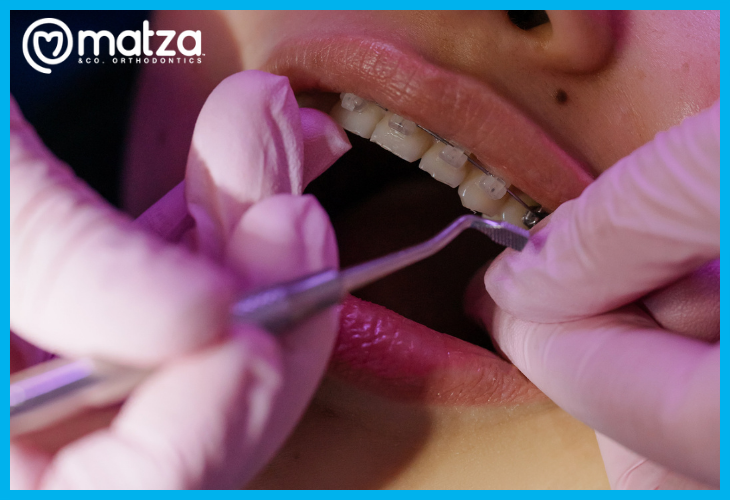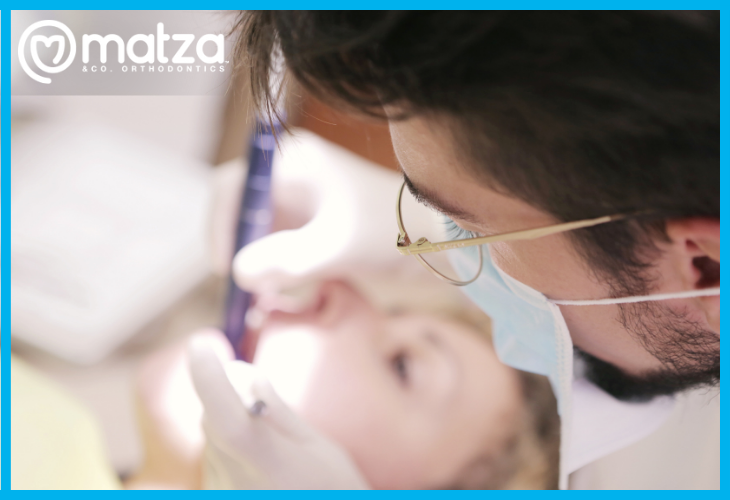Reasons for Braces and Orthodontic Treatment

Healthy teeth and gums, improved facial structure, and enhanced self-esteem are just a few of the many benefits of correcting your teeth with braces. Read to learn more about the benefits of braces: they are more than just straight teeth!
The reasons for braces and orthodontic treatment vary from patient to patient. Approximately 3 million American and Canadian teens have braces, with the number of adults beginning orthodontic treatment rising at a steady rate. Your dentist will typically be the first person to mention orthodontic treatment, and will likely send you or your loved one to see an orthodontist for a consultation.
Who Is a Candidate for Braces?
The American Association of Orthodontists (AAO) recommends that children should be seen for their first orthodontic consultation no later than age 7. While the age of 7 may seem unusually early to consider braces, this pre-screening will give the orthodontist the opportunity to use preventative measures to possibly correct situations that may lead to braces in the future, and /or advise the parent on future orthodontic treatment planning. Adults seeking orthodontic treatment may consult with their dentist at any time since it is never too late to consider correcting your teeth.
The initial consultation with the orthodontist is typically a visual evaluation of the patient’s teeth and facial structure, with discussion to follow. If the orthodontist requires more in-depth information, or the patient agrees to begin treatment, diagnostic records are then taken of the patient. These diagnostic tools, consisting of x-rays, models of the patient’s teeth, and photographs of the patient’s face and teeth, are used by the orthodontist to study and formulate a treatment plan to present to the patient. Although most orthodontists do not require a referral from your general dentist, it may be helpful if you obtain one when it comes time to choosing a dentist that is right for you.
Why You Might Need Braces

Braces are used to move teeth into the ideal position and align how they bite together, known as occlusion. Malocclusion is used to describe the misalignment of teeth between the upper and lower dental arches, using the first molars as a reference point.
There are three different types of misalignment, defined by the Angles Classification Method. Developed by Dr. Edward Angle, considered by many the founding father of orthodontics, this method of classification is widely used by dentists around the world.1
Angles Classification Method
- Class I: Considered the ideal relationship between the upper and lower teeth. Crowding or spacing may be present with Class I bite.
- Class II: Commonly known as “overbite.” The patient’s lower first molar is positioned more posteriorly in relation to the upper first molar. The mandible is not necessarily protruded, the maxilla may be retruded. Class II bite has two subclasses that also describe the position of the upper front teeth, but in both cases, the molar relationship is the same.
- Class III: The patient’s lower first molar is positioned more anteriorly in relation to the upper first molar. The mandible is not necessariltu protruded, the maxilla may be retruded. The lower jaw, or mandible, protrudes forward, and is best described as an “underbite.”
While some patients may have the ideal bite, they may suffer from varying degrees of crowding or spacing, another factor associated with a misaligned bite. Crowding is a condition that causes the teeth to overlap, rotate, and in some cases, grow into the incorrect position in the mouth, or in more extreme cases, cause the tooth to become trapped in the bone.
Crowding may be caused because the dental arch is too small for the adult teeth, or the adult teeth are larger than normal. Crowding may also be caused by losing the primary or baby teeth early or retaining them in the mouth longer than normal. These factors may inhibit the adult tooth, forcing it to erupt or grow into an incorrect position. Crowding makes it difficult to brush and floss the teeth correctly, possibly resulting in tooth decay or gingivitis.
Alternatively, varying degrees of spacing may be present, due to smaller teeth or jaw size. The most obvious example of spacing is the diastema, a space between the upper two front teeth, known as the centrals, made famous by Madonna.
More Than Just Straight Teeth
Misaligned teeth and an incorrect bite may affect more than just the appearance of your smile. The following conditions may potentially be corrected by orthodontics:
- Speech impediments
- Jaw or TMJ pain
- Difficulty chewing and eating
- Sleep apnea caused by mouth breathing and snoring
- Grinding or clenching of the teeth
- Gum disease and tooth decay
Patients experiencing any of the above symptoms should contact their dentist to determine the cause of their condition.
Aesthetics do play an important role when it comes to deciding if braces are right for you. Self-confidence may improve for patients that have concerns with the appearance of their teeth or facial shape. Many treatment options are available for correcting the look of your teeth and smile.
Talk to Your Dentist
Healthy teeth and gums, improved facial structure, and enhanced self-esteem are just a few of the many benefits of correcting your teeth with braces. To find an orthodontist in your area, visit the American Association of Orthodontics website, or book an appointment with your family dentist.
Are you wondering if braces are the right choice for you or your teen? Come meet our team — we will get all your questions answered. Schedule a consultation today— (561) 368.3480 or be part of our Facebook community.
Reference: [https://www.verywellhealth.com/braces-and-orthodontic-treatment-1059330]
